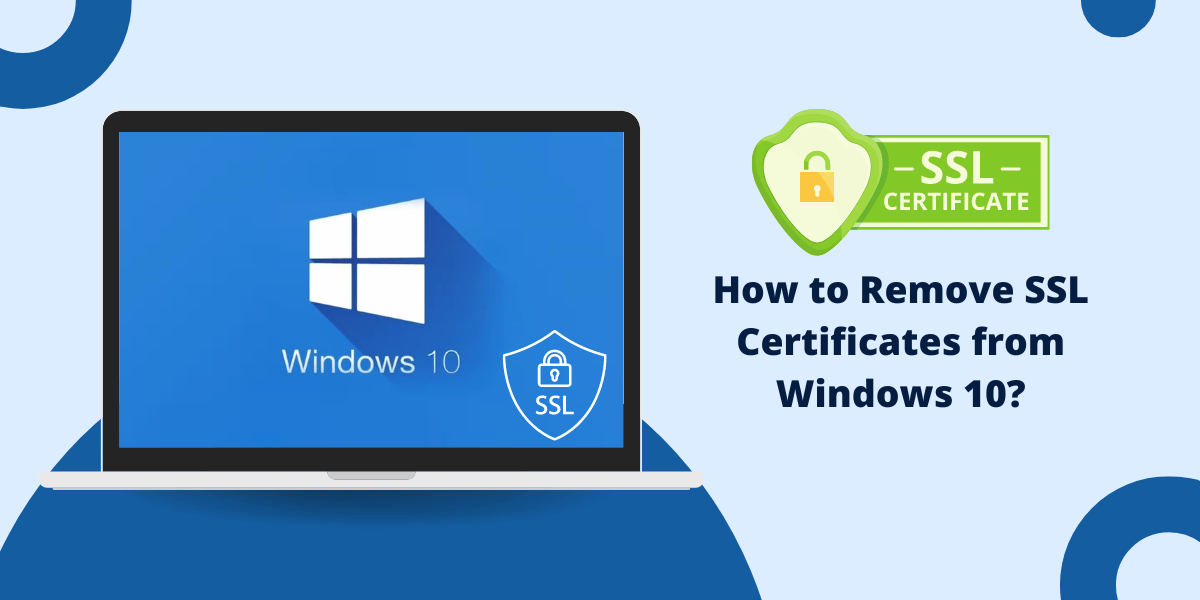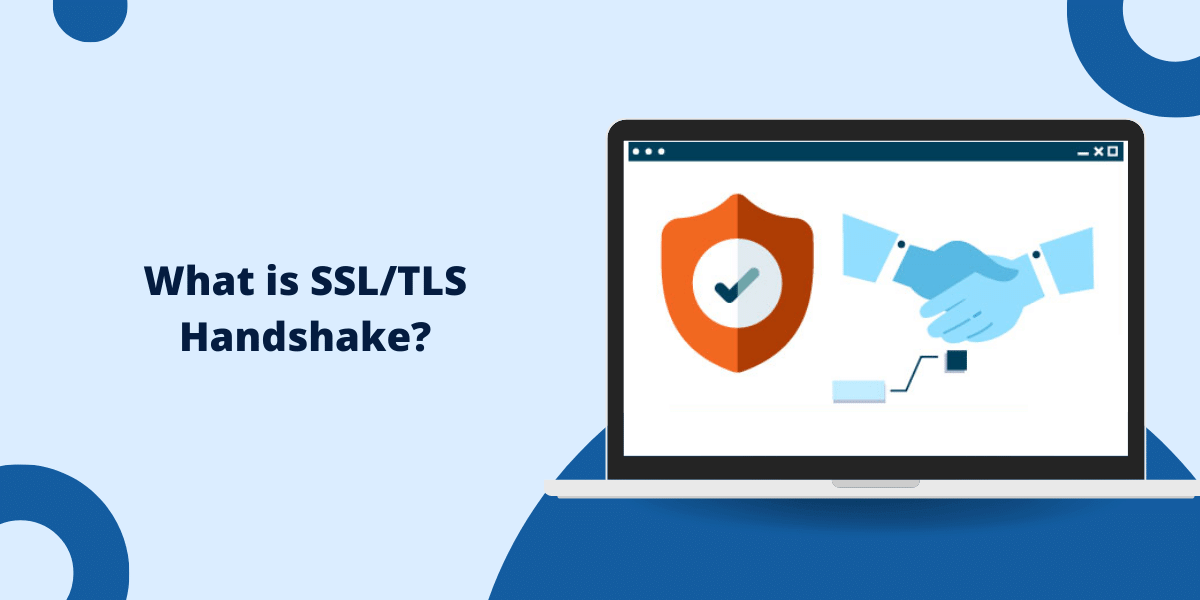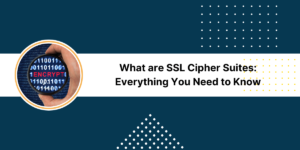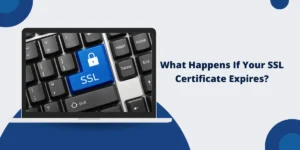A Step-by-Step Guide to Remove SSL from Windows 10
SSL certificates are an essential part of securing online communications and authenticating the identity of websites. They help prevent man-in-the-middle attacks and keep website visitor data secure. That’s why it’s important to get SSL certificates from trusted certificate authorities and renew them before expiration. However, there are times when you need to remove an SSL certificate from your Windows 10 device, such as if the certificate gets compromised or stolen. Removing a certificate is more complex than uninstalling an app. It involves several steps to turn off the certificate fully. In this comprehensive guide will walk you through the complete process of steps to remove SSL certificates from Windows 10.
Key Takeaways
- SSL certificates secure online communications and authenticate website identity. Allowing them to expire or leaving compromised certificates installed makes websites vulnerable.
- Simply deleting a certificate file does not fully remove it. Several steps are required to disable certificate purposes in Windows.
- The Microsoft Management Console provides an interface for viewing, managing, and removing certificates. The Certificates snap-in needs to be added to the console.
- After locating the certificate in the console, right-click and open Properties. In the General tab, disable all purposes for the certificate.
- Disabling a certificate prevents Windows from trusting it for any use. A server restart completes the removal process.
- Certificate backup before removal prevents errors from changes to root and intermediate certificates.
- SSL management tools can automate certificate removal when dealing with multiple certificates.
When Do You Need to Remove an SSL Certificate?
SSL certificates remain valid only for the length of their issuance term, typically 1-2 years. Once a certificate expires, the CA no longer guarantees the website’s legitimacy. Outdated certificates produce warnings in web browsers and prevent secure connections.
Some reasons why you may need to remove a valid SSL certificate before expiration include:
- The certificate was compromised: If an attacker obtains the certificate’s private key, they can impersonate the website and decrypt traffic. The compromised certificate must be revoked and removed immediately.
- The certificate was lost or stolen. Lost certificate files can’t be revoked, but they still pose a risk if obtained by bad actors. Removing lost certificates prevents misuse.
- SSL provider change: Switching to a new SSL provider requires removing old certificates before installing the new ones.
- Domain name change: If the website domain name changes, the old SSL certificate will no longer match and needs to be removed.
- Web server migration: Moving websites to new servers requires obtaining new certificates matched to the new environment.
- Renewal errors: Sometimes, certificate renewals fail or produce certificates with mistakes. The old certificate must be removed before reattempting renewal.
Allowing certificates to expire or leaving compromised/invalid certificates installed makes your websites vulnerable to man-in-the-middle attacks. Visitors will receive trust warnings that negatively impact the site’s reputation. That’s why properly removing outdated, compromised, or invalid certificates is a crucial website security practice.
How Does Certificate Removal Work?
You can’t simply find and delete an SSL certificate file from your system to remove it. That’s because the certificate gets installed into the trusted certificate store and activated for specific purposes within the operating system.
Here are the two main steps involved:
- Locate the certificate: Certificates are stored in the Windows certificate manager database. It would help if you used the management interface to view installed certificates and verify certificate details.
- Disable certificate purposes: In the certificate Properties, there is an option to disable all usage purposes. This prevents Windows and applications from trusting the certificate.
Once fully disabled in the OS, the certificate can be deleted from the file system if desired. A server restart helps complete the removal process.
What are the Requirements for Removing Certificates from Windows 10
You’ll need administrator access to remove SSL certificates from the Windows 10 operating system.
Here are the requirements:
- Admin privileges: Viewing and managing certificates requires admin rights on the device.
- Backup: Having a certificate backup allows easy reinstallation if needed.
- Microsoft Management Console: The console provides access to the Windows certificate manager.
- Certificates snap-in: This snap-in needs to be added to the console to view and manage certs.
As long as you have access and tools to view/modify Windows certificates, you can follow the upcoming steps to remove any certificate.
8 Easy Steps to Remove SSL Certificates in Windows 10
Here is the complete step-by-step process for removing SSL certificates from the Windows 10 OS:
- Launch the Microsoft Management Console (MMC)
- Add the Certificates Snap-in
- Select the Certificate Scope
- Confirm Certificate Store Location
- View Available Certificates
- Locate the Certificate to Remove
- Disable the Certificate
- Restart the Server
Step: 1 Launch the Microsoft Management Console (MMC)
The MMC provides an interface for managing settings and components in Windows. For specific management purposes, you can add different snap-ins to the console.
- Go to the Windows start menu and search for “MMC.” Launch the Microsoft Management Console desktop app.
- OR Alternatively, press Windows + R and enter “mmc” to open the console.
Step 2: Add the Certificates Snap-in
The Certificates snap-in allows viewing and managing all certificates installed on the local computer or current user account.
- In the empty MMC console, click the File menu and select Add/Remove Snap-in.
- In the Available snap-ins panel on the left, click to highlight Certificates and click Add.
- This moves the Certificates snap-in to the Selected snap-ins panel on the right. Click OK to add it.
This will add a Certificates section in the MMC console to view and manage all certificates.
Step 3: Select the Certificate Scope
Before viewing certificates, you must select the scope for which you want to manage them – for the current user or the entire computer.
- In the new Certificates snap-in window, choose the account for certificate management:: Computer account: Manage certificates for all users. Need admin access.: My user account: Manage personal certificates for the current user only.
- For our purposes, choose the Computer account to be able to remove any certificate. Select Next.
Step 4: Confirm Certificate Store Location
Next, confirm where you want to retrieve the certificates from. We need the certificates on the local system.
- In the Select Computer window, choose Local computer and hit Finish.
This will add the Certificates section to the console with all personal and trusted certificates.
Step 5: View Available Certificates
You will now see the Certificates snap-in populated in the console’s left panel. Expand the sections to view trusted root certificates and intermediate authorities.
- Expand Certificates (Local Computer) > Trusted Root Certification Authorities > Certificates.
- Also expand Intermediate Certification Authorities > Certificates
Step 6: Locate the Certificate to Remove
Now, go through the list of certificates on the system to find the one you want to remove. Match the certificate name, issuer, and other details to verify you have the correct one.
For example, if I want to remove the SSL certificate for mydomain.com, I would scroll through the list to find it:
- Expand sections and look for a certificate issued to mydomain.com
- The issuer will be the SSL provider, like Comodo or DigiCert
- Match the validity period, signature algorithm, public key, etc.
- Double-click the certificate to verify the details.
This opens the Certificate dialog to confirm all the identifying info. Make absolutely sure you have the correct certificate before disabling it.
Once you’ve verified the certificate details, do not make any changes here. This is just for confirmation: disabling happens in the next step.
Step 7: Disable the Certificate
When you’ve confirmed the certificate to remove, right-click on it and select Open. This launches the Certificate dialog.
- Go to the General tab
- Find the Certificate Purposes section
- Check the box for Disable all purposes for this certificate
- Click Apply and OK to save the changes
This will disable any usage of that certificate across Windows and applications.
With all purposes disabled, Windows will no longer trust the certificate. But a restart helps fully apply the changes.
Step 8: Restart the Server
The final step is to restart the server to complete the certificate removal procedure. This will reload the OS and apply for disabled certificate purposes.
- Click the Start button
- Select Power > Restart to reboot the system
- Give the system a few minutes to start up again
Once restarted, the disabled certificate will no longer be active or trusted on the server. You can now safely delete the certificate file if you want to.
This completes the full removal process for SSL certificates in Windows 10. The certificate is disabled in the OS and will not be used for encryption, authentication, etc.
What are Some Best Practices When Removing SSL Certificates
Follow these best practices to remove certificates and avoid potential issues safely:
- Have a backup of the certificate and private key before removal.
- Double-check that you are disabling the correct cert to prevent outages.
- Disable certificates instead of just deleting files in case the removal process is interrupted.
- Restart servers after making certificate changes to apply them fully.
- If issues arise after removal, reinstall the backed-up certificate until the problems can be fixed.
- Use automation tools like Ansible or PowerShell if you need to remove multiple certificates.
Properly removing outdated, compromised, or invalid certificates keeps your systems and websites secure. Follow this Windows 10 certificate removal guide to disable certificates when needed.
Troubleshooting Common SSL Certificate Removal Issues
Sometimes, certificate removal can result in problems and errors.
Here are some common issues and fixes:
Website Connectivity Issues After Removal
If your website goes down or has SSL errors after removing a certificate, try restarting the web server. If that doesn’t resolve it, you may need to reinstall the certificate from the backup and then troubleshoot why it is still active.
Browsers Still Show Old Certificates.
It can take time for browsers to update their cache and recognize that a certificate is no longer valid. Try clearing your browser cache and history. Restarting your computer also helps apply certificate changes.
Removal Seems Stuck or Incomplete.
In rare cases, a restart may not fully disable the certificate’s purposes. You can try removing the certificate again from scratch to ensure all purposes are disabled. Also, verify that no other copies of the certificate are still active.
Can’t Delete Certificate File
Once the OS is fully disabled, the certificate file can be deleted. But if you get access errors, try restarting to release any system locks on the file. Or leave the file as Windows no longer uses it.
Website Downtime During Removal
To prevent website outages, install a new SSL certificate before removing old certificates. Installing the new certificate immediately after removal minimizes downtime.
If you run into any other problems, restart, and try the removal process again from the beginning. Problems with the root or intermediate certificates can also cause certificate issues. If troubleshooting steps don’t resolve your issue, check for solutions specific to your SSL provider.
Final Thoughts
SSL, TLS, and HTTPS play a critical role in securing sensitive data as it travels across the internet. These encryption protocols and technologies establish secure links between your devices and websites, scrambling data to keep it safe from prying eyes. As cyberattacks grow more sophisticated, properly implemented Encryption remains one of the best defenses we have. While not flawless, technologies like TLS provide core protection for our digital lives. Keeping servers, apps, and browsers updated with the latest protocols is essential. Although the infrastructure behind it is complex, users need to look for the padlock icon and HTTPS in the URL to verify their connection is secure.
FAQs About Remove SSL Certificates from Windows 10
Here are some frequently asked questions about remove SSL certificates from Windows 10:
Do I Need to Uninstall or Delete the Certificate File?
No, simply disabling all purposes in the Certificates console is sufficient to remove it from use. Once disabled, the file can be deleted if desired. However, the key steps are performed in the management console.
Where Are SSL Certificates Stored in Windows?
Certificates are stored in the Windows Certificate Manager database. The Certificates snap-in provides easy access to manage both user and computer certificates.
Can I Remove a Certificate Remotely?
Yes, you can use remote desktop tools like RDP to access a remote Windows computer and manage certificates from your local system. PowerShell remote is another option for remote certificate removal.
Should I Make a Backup Before Removing a Certificate?
Making a certificate backup before removal is highly recommended. That way, if any issues arise, you can easily reinstall the certificate while troubleshooting the removal problems.
How Long Does It Take to Remove a Certificate Fully Completely?
The removal steps via the Certificates console are quick to perform. However, allow about 5 minutes for a restart plus another 5 minutes for browsers to recognize the change. Removal is usually completed within 10-15 minutes.
What Happens If I Delete the Certificate File but Don’t Disable It?
The certificate may be partially trusted or active for properly disabling purposes. Deleting files alone does not remove certificates from root stores in Windows and browsers.
Can I Remove Multiple Certificates at Once?
While you can turn off multiple certificates one by one, doing so becomes time-consuming with a large number of certificates. SSL management tools help automate the removal of various certificates.
What Tools Can Help Manage Multiple Certificates?
Products like Ansible, PowerShell scripts, and purpose-built SSL managers from brands like AppViewX or DigiCert can automate the discovery, removal, and replacement of multiple certificates at scale.

Priya Mervana
 Verified Web Security Experts
Verified Web Security Experts
Priya Mervana is working at SSLInsights.com as a web security expert with over 10 years of experience writing about encryption, SSL certificates, and online privacy. She aims to make complex security topics easily understandable for everyday internet users.



